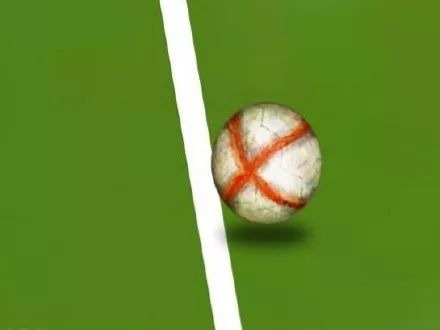Product
What do the lines on a soccer pitch mean
Basic Info
There are several lines on the football field:
1、 The midline, which is the line in the middle of the football field, is the midline that divides the two sides of the field equally.
2、 The goal line is the straight line between the two pillars of the goal.
3、 The small penalty line is the penalty line that turns closer to the goal.
4、 The big penalty line is the penalty line that turns away from the goal.
5、 The central arc is the arc in the middle of the centerline.
6、 Edge line, long edge line of the venue.
7、 The bottom line is the bottom line on both sides of the goal line.
1、 The midline, which is the line in the middle of the football field, is the midline that divides the two sides of the field equally.
2、 The goal line is the straight line between the two pillars of the goal.
3、 The small penalty line is the penalty line that turns closer to the goal.
4、 The big penalty line is the penalty line that turns away from the goal.
5、 The central arc is the arc in the middle of the centerline.
6、 Edge line, long edge line of the venue.
7、 The bottom line is the bottom line on both sides of the goal line.
The center line, sidelines, goal lines... there are many "lines" on the court. The rules of football match state that the ball needs to cross the line as a whole to be considered out of bounds, and the ball needs to cross the line as a whole to be considered a goal. "Line" is the boundary, it is the boundary. The various boundaries on the field test the speed, time, and trajectory of the ball's movement by both players, as well as the observation and judgment of the referees. The ball between the line of crossing and not crossing determines the different fates of both sides in the game, and disputes over various boundary judgments often occur on the field.
In football matches, controversies over "lines" abound. As early as the 1970 FIFA World Cup, there was controversy over whether the ball was out of bounds. In the match between Uruguay and the Soviet Union, the goal scored by Uruguay in extra time caused dissatisfaction among Soviet players. They believed that the ball had already crossed the baseline before crossing the goal line, so Uruguay's goal should be invalid, but the referee did not make a change in the judgment. Due to limited conditions at the time, it was not possible to provide accurate judgments based on the remaining videos. And just four years ago in the last final, there was a more controversial scene. It was also in extra time of the game that English player Hearst's goal pressed against the goal line created the most famous controversial goal in football history. England ultimately defeated Federal Germany and won the championship. However, 44 years later, in the 2010 World Cup, England and Germany once again sparked controversy over the goal line, and Lampard's clear goal crossing the goal line was ignored by the referees of that game. Unlike 44 years ago, 44 years ago was an inexplicable case of a "scandal", but this time it is an obvious case of a "wrongful scandal"; England, who profited in front of the goal line 44 years ago, was harmed by the goal line this time, benefiting their opponent Germany 44 years ago.
In addition to the sidelines and bottom lines around the stadium, there are also small areas enclosed by lines such as the middle circle and penalty area. In addition to these visible lines, there are also some invisible lines in football matches, the most typical of which is the offside line. On the same day that Lampard scored, in another game a few hours later, Argentine star Messi provided an assist to his teammate, and Tevez took a shot to score the ball. However, when Messi passed the ball, Tevez was clearly in an offside position. But the referee in this game also had a blind eye and surprisingly ruled that the goal was valid. The opposing Mexican team's players were certainly not satisfied with this and surrounded the referee. As Mexican players surrounded the referee, the TV broadcast footage and live screens were playing a slow motion replay of the goal. Even if one didn't understand the rules of offside, it was clear that Tevez had already crossed the "offside line" marked on the TV screen and stood in the "dark" area that belonged to offside. Perhaps the referee also realized that they had made a mistake, but the rules at the time did not allow the referee to correct the judgment by watching "slow motion", so they could only "correct the mistake". And the result of this game goes without saying much.

In football matches, controversies over "lines" abound. As early as the 1970 FIFA World Cup, there was controversy over whether the ball was out of bounds. In the match between Uruguay and the Soviet Union, the goal scored by Uruguay in extra time caused dissatisfaction among Soviet players. They believed that the ball had already crossed the baseline before crossing the goal line, so Uruguay's goal should be invalid, but the referee did not make a change in the judgment. Due to limited conditions at the time, it was not possible to provide accurate judgments based on the remaining videos. And just four years ago in the last final, there was a more controversial scene. It was also in extra time of the game that English player Hearst's goal pressed against the goal line created the most famous controversial goal in football history. England ultimately defeated Federal Germany and won the championship. However, 44 years later, in the 2010 World Cup, England and Germany once again sparked controversy over the goal line, and Lampard's clear goal crossing the goal line was ignored by the referees of that game. Unlike 44 years ago, 44 years ago was an inexplicable case of a "scandal", but this time it is an obvious case of a "wrongful scandal"; England, who profited in front of the goal line 44 years ago, was harmed by the goal line this time, benefiting their opponent Germany 44 years ago.

In addition to the sidelines and bottom lines around the stadium, there are also small areas enclosed by lines such as the middle circle and penalty area. In addition to these visible lines, there are also some invisible lines in football matches, the most typical of which is the offside line. On the same day that Lampard scored, in another game a few hours later, Argentine star Messi provided an assist to his teammate, and Tevez took a shot to score the ball. However, when Messi passed the ball, Tevez was clearly in an offside position. But the referee in this game also had a blind eye and surprisingly ruled that the goal was valid. The opposing Mexican team's players were certainly not satisfied with this and surrounded the referee. As Mexican players surrounded the referee, the TV broadcast footage and live screens were playing a slow motion replay of the goal. Even if one didn't understand the rules of offside, it was clear that Tevez had already crossed the "offside line" marked on the TV screen and stood in the "dark" area that belonged to offside. Perhaps the referee also realized that they had made a mistake, but the rules at the time did not allow the referee to correct the judgment by watching "slow motion", so they could only "correct the mistake". And the result of this game goes without saying much.

Looking at myself again, the zebra crossing on the road, the "one meter line" when queuing, and everyone's own "bottom line"... Some of these lines are visible, some are invisible, and between the "inside line" and "outside line", they also reflect two completely different selves.
More LDK football product recommendations:
Football Cage
Futsal Goals
Metal Football Goal
Aluminum Football Goal
Foldable Football Goal
Portable Football Goal
Mini Football Goal














